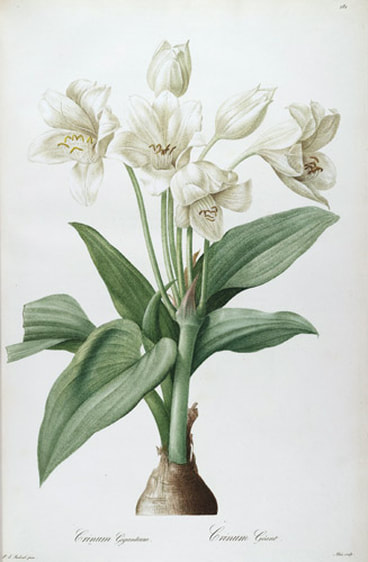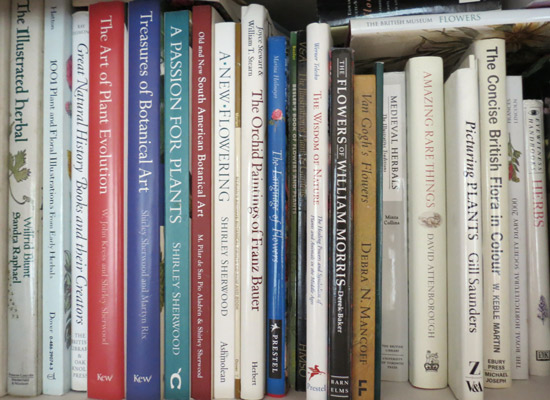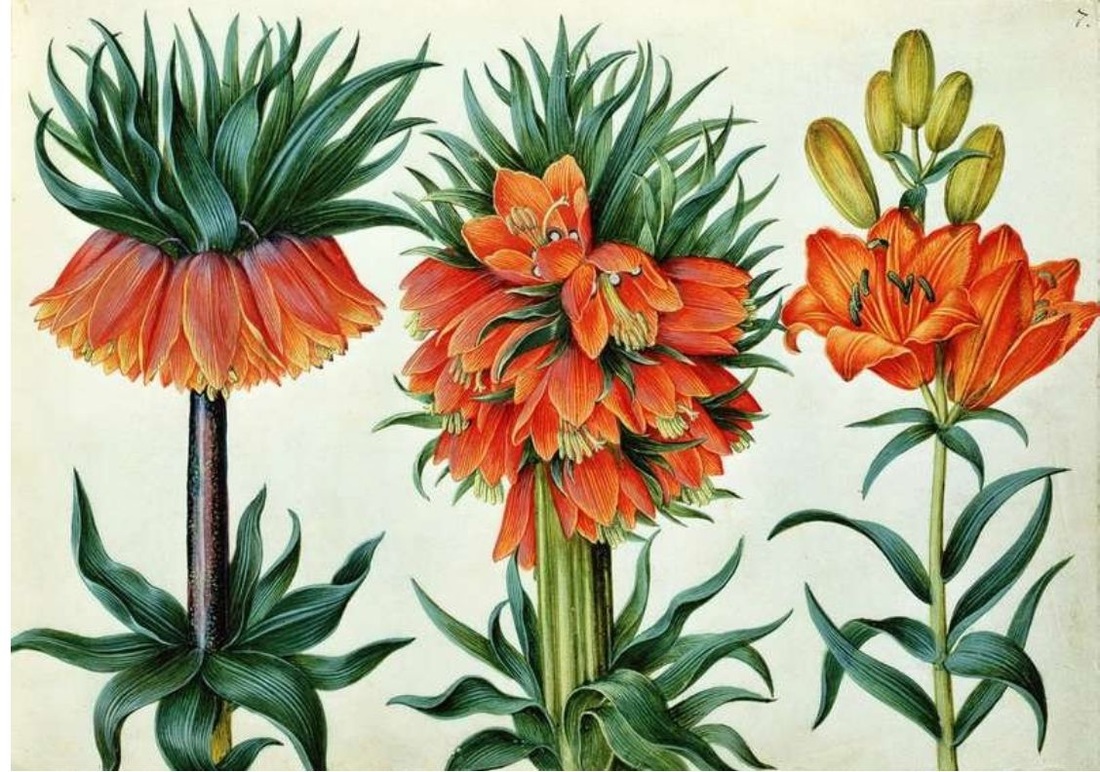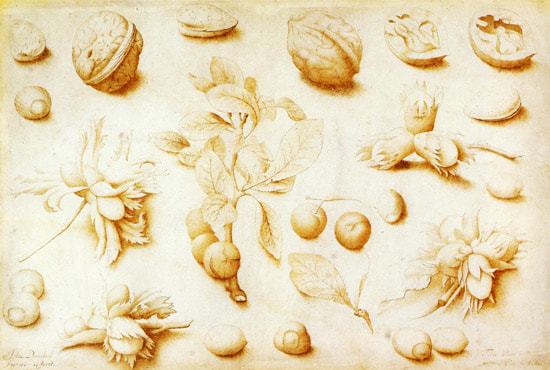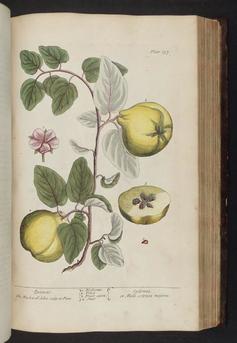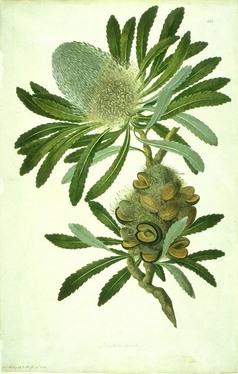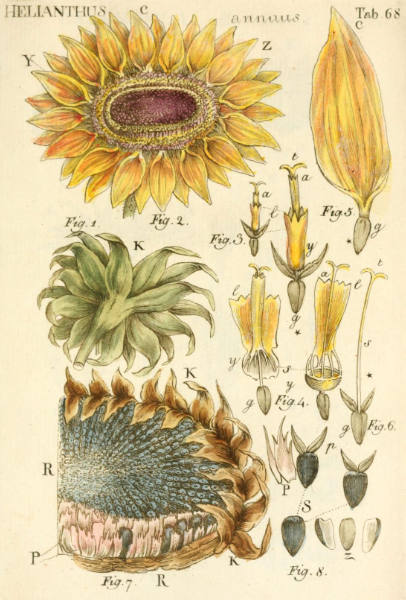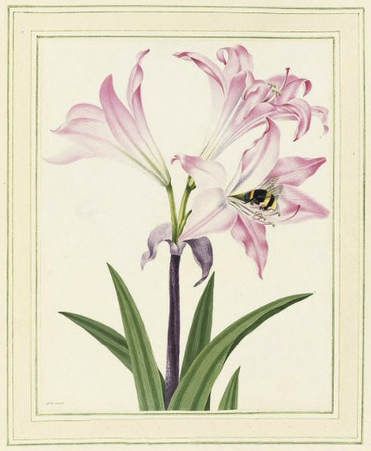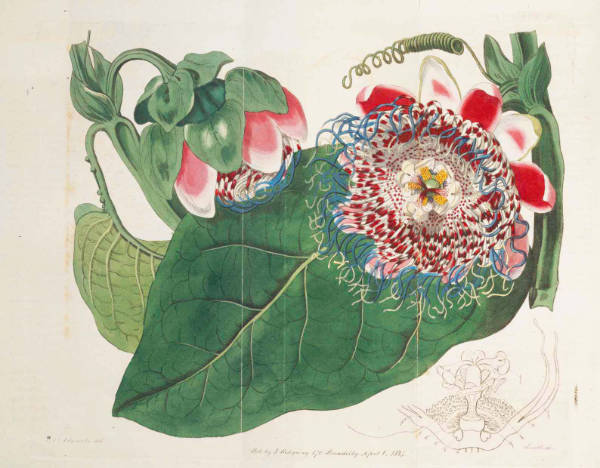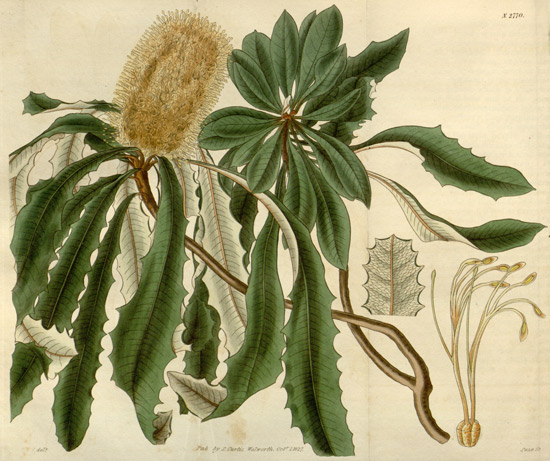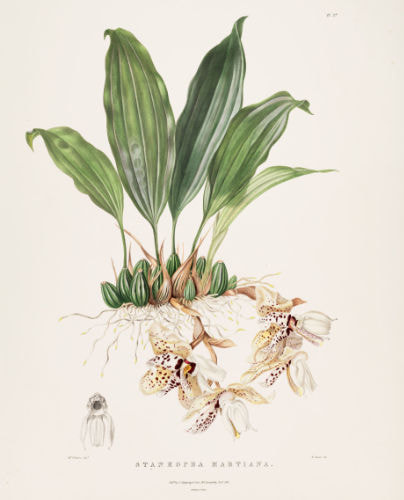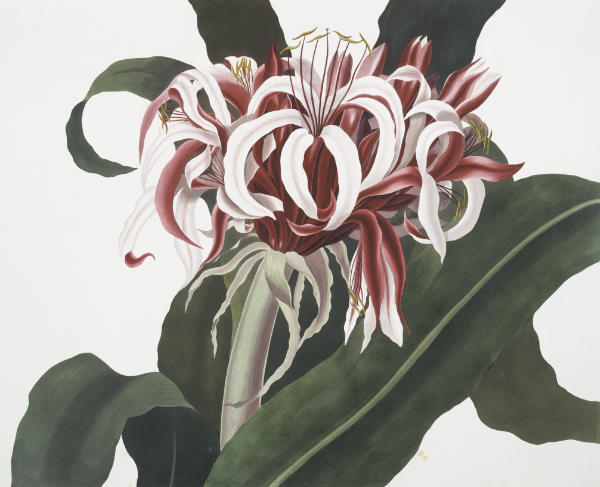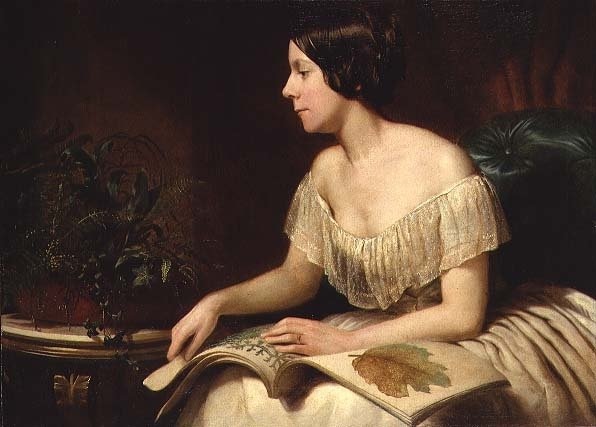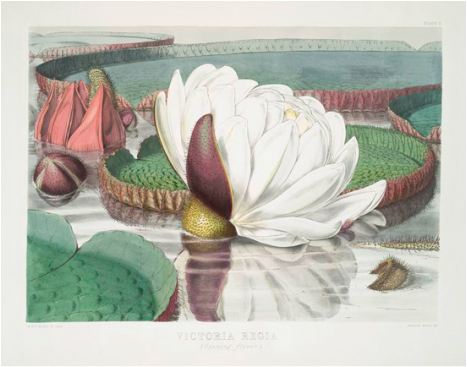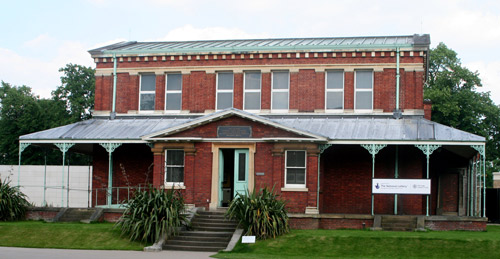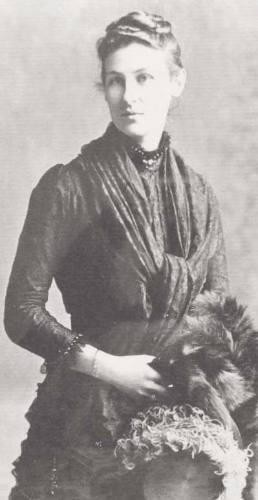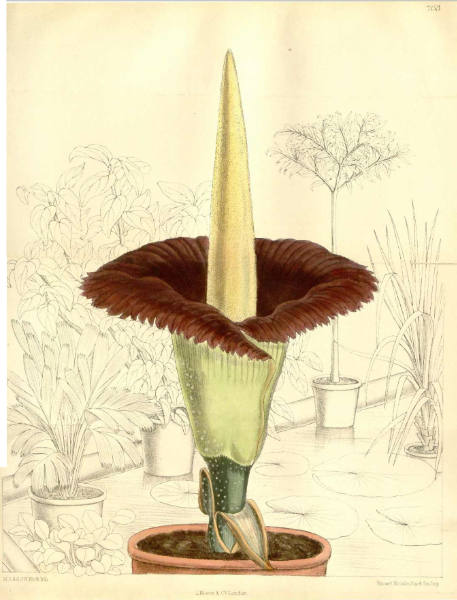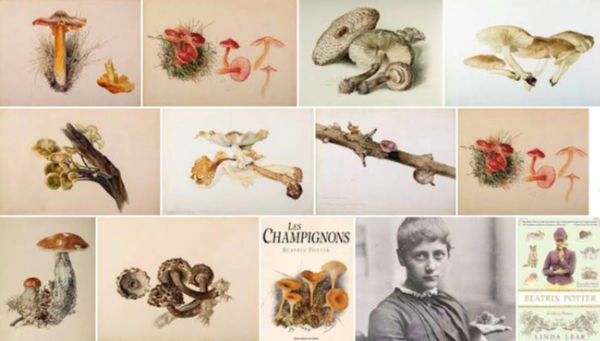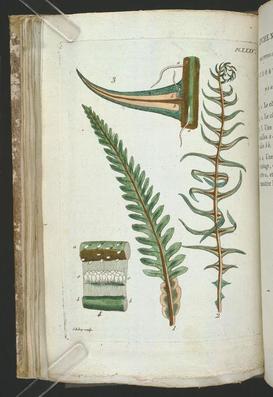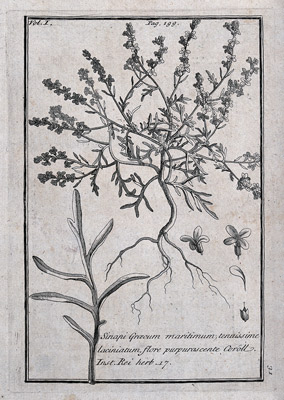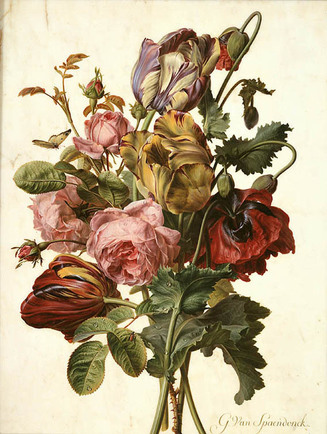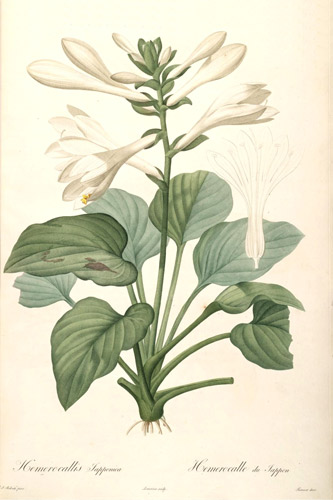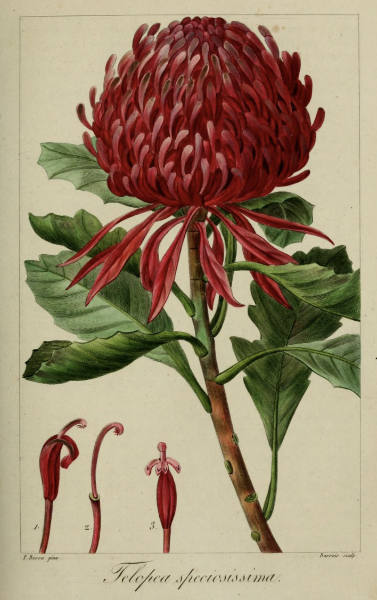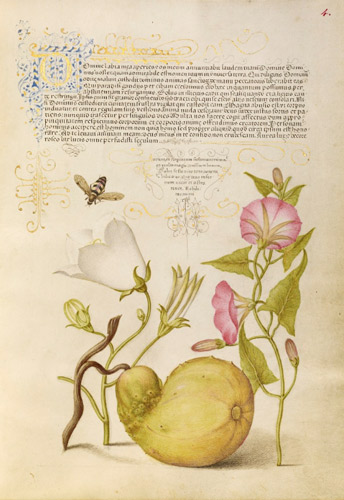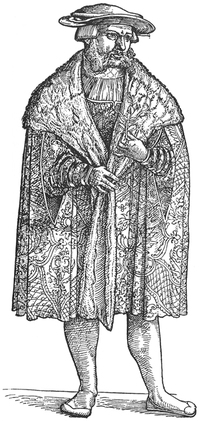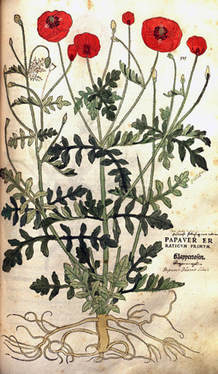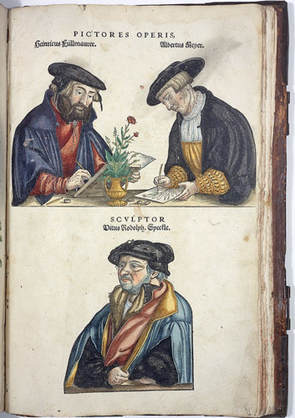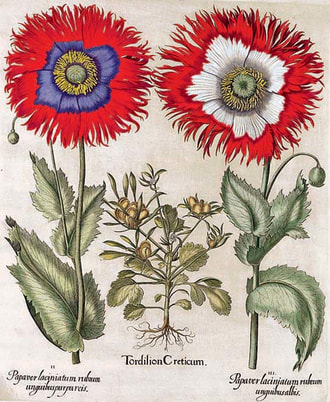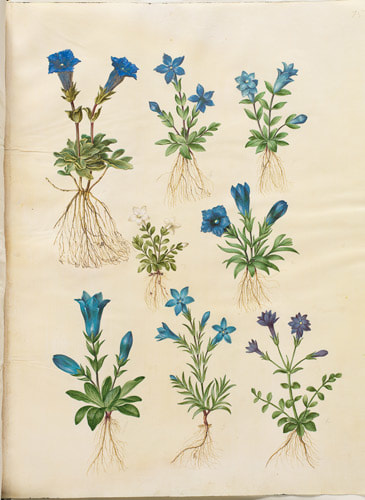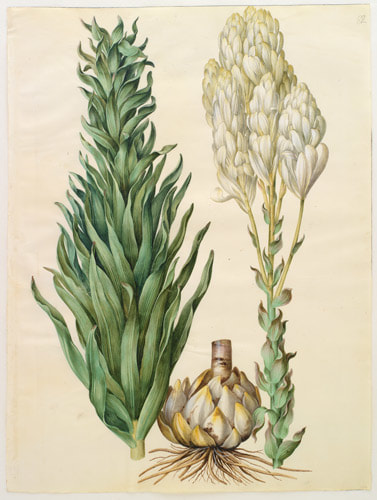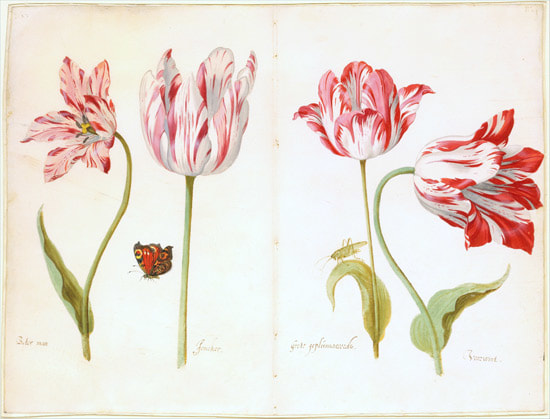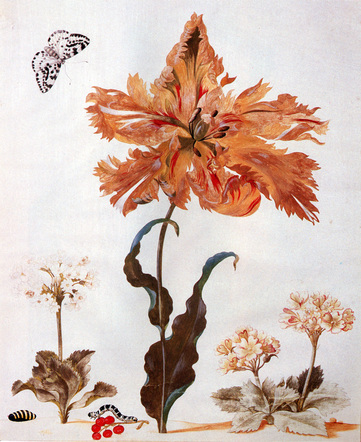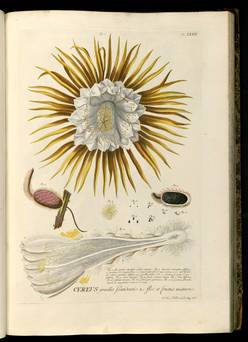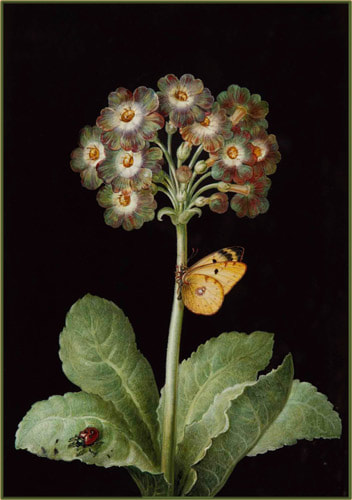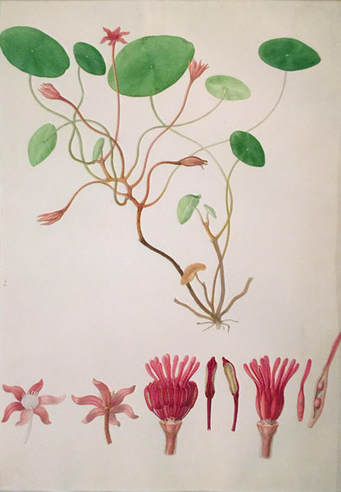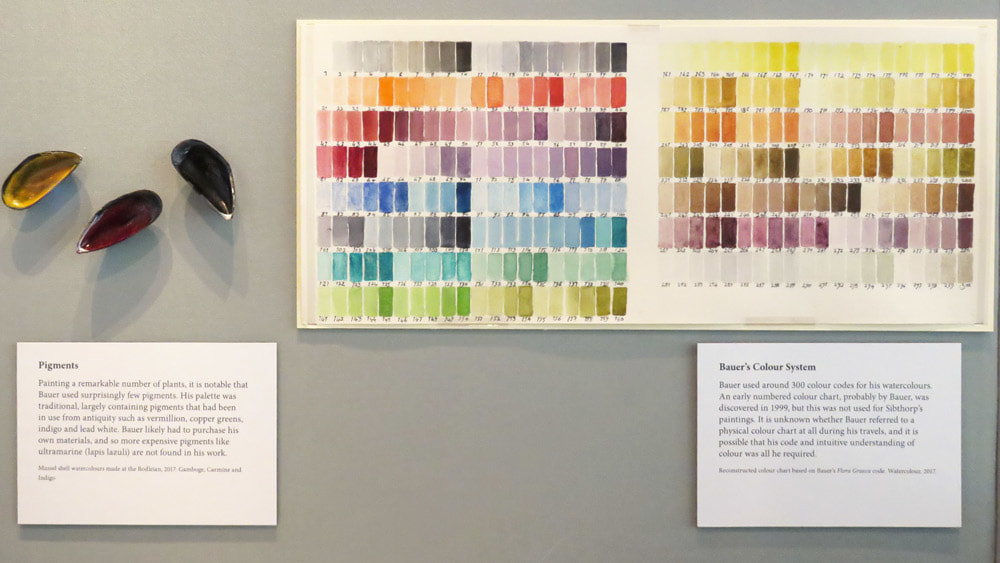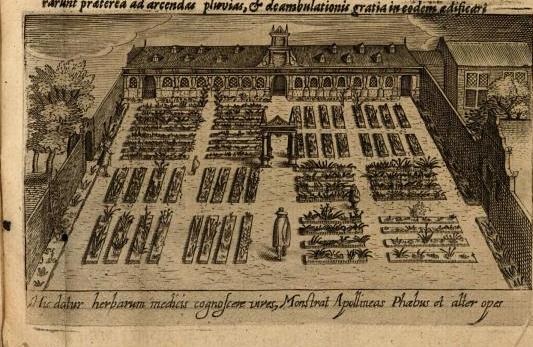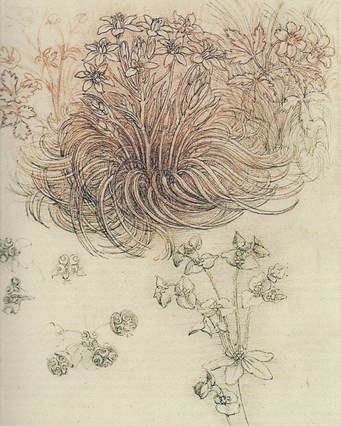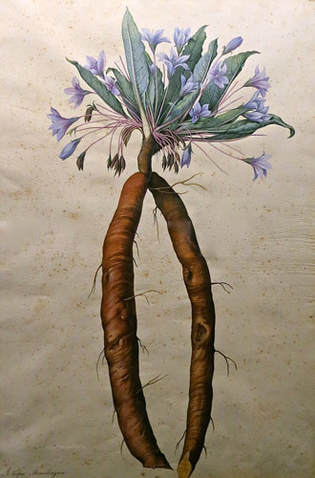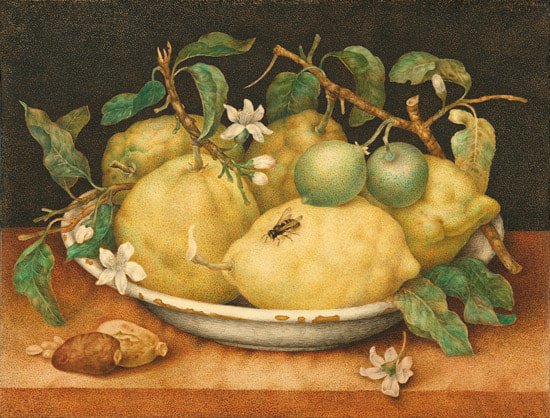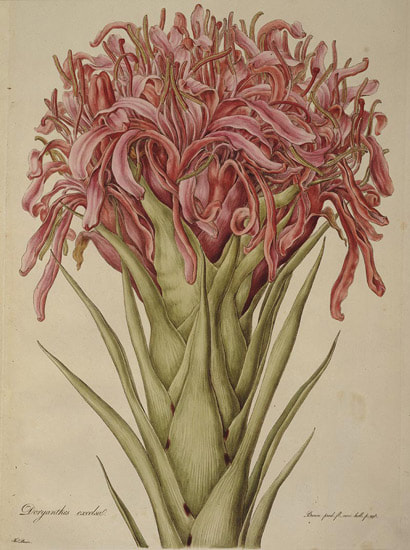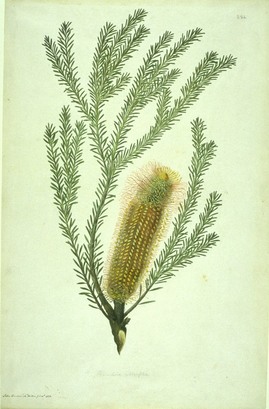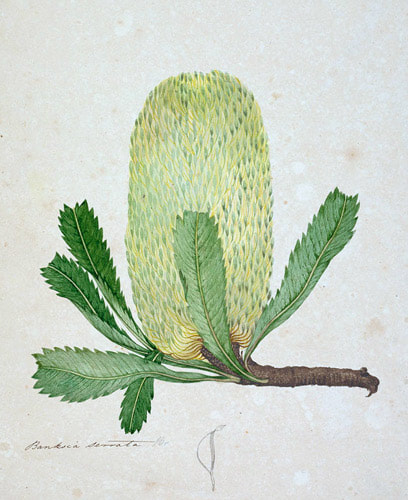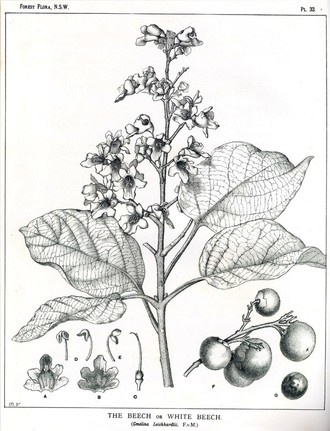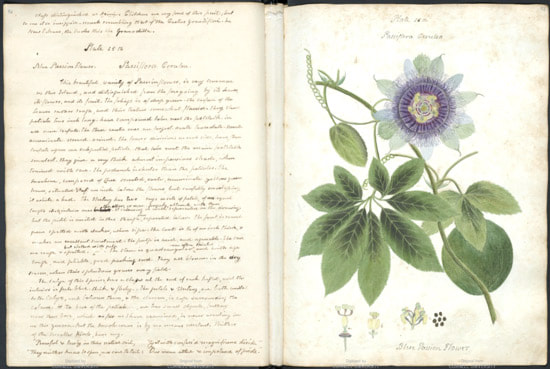- Home
- NEWS
-
HISTORY
- What is Botanical Art?
- What is Botanical Illustration?
- Botanical Art History Books >
- Herbals
- Florilegia and Flora
- Patrons of Botanical Art >
- Past Masters - Botanical Art and Illustration >
- Famous Asian Botanical Artists (600-1900)
- 20th & 21st Century Botanical Artists >
- Botanical Photographers
- Botanical and Herbal Art Online
-
ARTISTS
- Botanical Artists in the UK
- Botanical Artists in North America
- Botanical Artists in Europe
- Botanical Artists in Australia and New Zealand
- Botanical Artists in Asia
- Botanical Artists in Africa
- Botanical Artists in Latin America
- Botanical Printmakers, Photographers, Sculptors et al
- The Jill Smythies Award
- Botanical Artists on Facebook
- Botanical Art Blogs
-
Exhibitions
- Calls for Entries - OPEN exhibitions
- Online Exhibitions >
- RHS Botanical Art & Photography Shows >
- The Shirley Sherwood Gallery of Botanical Art >
- Hunt International Exhibition of Botanical Art & Illustration
-
UK
>
- North America >
- Europe >
- Australasia >
- Asia >
- Africa
- ARCHIVE: World Wide Exhibition of Botanical Art 2018
-
Education
- NEW BOOKS about Botanical Art and Illustration >
-
Best Botanical Art Instruction Books
>
- Tips and Techniques >
- Botanical Art Video Tips >
- Online Botanical Art Instruction >
- International Directory: Botanical Art Teachers
- International Directory of Botanical Art Courses >
- Artist Residencies, Scholarships and Bursaries
- Diplomas and Certificates >
- Distance Learning Courses
- Talks, Lectures & Tours
- Botanical Education on Facebook
- Materials
- Groups
-
Botany
- Why botany matters to artists
- Botany Books for artists >
- Scientific botanical illustration
- Plant Forms and Anatomy
- Plant Evolution and Taxonomy
- Plant Names and Botanical Latin
- Botanical Dictionaries
- How to Identify Plants
- Recording a Plant / Sketchbooks >
- Botanic Gardens & Herbaria >
- Blogs about Plants and Flowers
- Contact
This page highlights
- some of the Famous botanical artists and illustrators and Past Masters - between 1500 and 1900
- other notable artists working within botanical art and illustration.
- PLUS links to pages on this website dedicated to botanical artists of particular note
|
This page covers famous botanical artists from:
GO TO:
Famous Asian Botanical Artists (600 - 1500) for artists from China, India and Japan Famous Botanical Artists of the 20th Century for artists after 1900 from the UK, USA, Ireland, Australia, South Africa, Zimbabwe, Brazil, China and Japan. Botanical Photographers for those who specialised in using photography of plants |
Famous Botanical Artists (1500-1900)
|
The Famous Botanical Artists (1500 - 1900) listed below are categorised according to
If you CLICK the name of the artist the embedded link in each name will take you away from this website to a website providing more information about that artist - typically:
In addition, this is a link to a list of very many artists who drew and painted plants - as listed on the Plant Illustrations website (987 last time I looked!).
Click on the artists names to see the illustrations identified - and then click on the illustration to see more about it. |
These are the people who have a DEDICATED WEB PAGE on this website. (in chronological order) 1500-1900 Famous Botanical Patrons
|
|
I'm a botanical bibliophile - and these are a few of my books about botanical artists.
One thing I know very well from buying books about botanical artists - they very often get more expensive rather than less expensive as time passes! This is a link to my website about The Best Books about Botanical Artists & Illustrators |
FAMOUS BRITISH BOTANICAL ARTISTS (1500 - 1900)
The stories behind the botanical art of these British Botanical Artists are absolutely fascinating.
Artists are listed according to a timeline of their birth dates.
Check out famous British Botanical Artists of the 20th Century
Artists are listed according to a timeline of their birth dates.
Check out famous British Botanical Artists of the 20th Century
|
Alexander Marshal (1620-1682)
A gentleman gardener living in London who studied rare plants. He decided to record the native and newly imported plants from the Near East and the USA growing in gardens. His florilegium contains 159 folios of watercolour paintings for his own personal pleasure. They contain more than 600 plant species, and detailed studies of insects, birds and animals. |
|
John Dunstall (1644–1675)
Dunstall was a skilful draughtsman and engraver. Most of his work related to portraits and properties. However he also published some drawing-books of natural history. These include compilation drawings of flowers, fruits and nuts. He moved around and lived between Blackfriars, Fleet Street and ludgate Street. It's very probable that he drew his specimens via access to the Old Botanic Gardens in the City of London. Sir Hans Sloane bequeathed artwork by him to the British Museum including
|
|
Elizabeth Blackwell (1707-1758)
The link in her name is to a special page on this site dedicated to him. Elizabeth Blackwell was the first British woman to produce a herbal and the first woman to engrave as well as draw plants. She created and published her Herbal to raise funds to save her husband from debtors' prison |
|
Sydney Parkinson (1745 - 1771)
The link in his name is to a special page on this site dedicated to him. Sydney Parkinson sailed with Captain Cook on the Endeavour and was the first non-Aboriginal artist to set foot on Australian soil. He was the first botanical artist to draw and paint plants collected in Australia. See also below under Australia |
|
John Miller (1715–c.1792)
Born Johann Sebastian Müller in Nuremberg, John Miller was a German draughtsman and engraver active in London. In 1744, he came to England and began working with Philip Miller of Chelsea Physic Garden. Initially, he signed his early works J. S. Müller or J. S. Miller. After 1760 used the signature of John Miller. His works included
|
|
Peter Brown (1758-1799)
A British natural history artist of Danish descent known for his animal and flower paintings. He studied with the renowned botanical artist Georg Dionysius Ehret (1708-70). His style resembles that of Ehret. It's possible that the plant subjects for a number of his paintings came from the Royal Botanic Gardens at Kew. His patron, Lord Bute (1713-92), advised Princess Augusta on the development of Kew. In 1784, he became botanical painter to George, Prince of Wales (the future George IV) - and then started to tutor a tutoring a number of aristocrats who engaged in botanical illustration. He painted on vellum as did a number of other professional botanical illustrators in the 18th century preferred vellum to paper. Its smooth surface enabled them to paint very fine detail and helped to give a sheen to the painting of leaves and petals. |
|
Sydenham T. Edwards, 1768-1819
Sydenham Edwards is one of a few Welsh botanical illustrators who subsequently became a publisher of botanical publications. He was born in 1768 in Usk, Monmouthshire. The T in his name was introduced after he was christened and an account can be found in the article about the welsh artist below. His future career started when he displayed a precocious talent for draughtsmanship as a child. He is said to copied plates from Flora Londinensis for his own enjoyment when only 11. The author of Flora Londinensis met Edwards in Abergavenny and subsequently showed his copies to William Curtis (the publisher of Curtis's Botanical Magazine). Curtis subsequently trained Edwards in both botany and botanical illustration and he became a proficient botanical illustrator in a short time. His first illustration for His first illustration for the Botanical Magazine (Vol. II, Plate 39), was the carnation Franklin’s Tartar, which appeared in February 1787 - when he was aged 19. He died on February 8, 1819) His Botanical illustrations regularly appeared in Curtis's Botanical Magazine before a quarrel with John Sims led to his founding of
|
Botanical Register; Consisting of Coloured Figures of Exotic Plants Cultivated in British Gardens; with their History and Mode of Treatment. |
|
William Jackson Hooker (1785 – 1865)
Regius Professor of Botany at Glasgow University and a competent botanical illustrator. He was also
|
|
Augusta Innes Withers (1792-1877)
appointed "Flower Painter in Ordinary" to Queen Adelaide and later to Queen Victoria. (She was the daughter of a chaplain to the Prince Regent). She lived at 23 Paulton Square, Kings Road, Chelsea and was active as a painter from before 1827 to 1865 and also taught art. Joseph Dalton Hooker refused a position Withers a position as a botanical artist, She produced illustrations for
REFERENCE: |
|
Mrs Priscilla Susan Bury (1799 - 1872)
Mrs Bury's place in botanical art history is due to her flower paintings which were published as engravings in A Selection of Hexandrian Plants, belonging to the Natural Orders Amaryllidae and Liliacae in London by Robert Havell the younger, [plates watermarked 1831-1834]. There were 79 subscribers and hence this is now a rare book of some significance. A copy of her book was auctioned at Christies in 2001 and fetched £75,250. Priscilla Susan Falkner was born in Liverpool. She was the daughter of a rich Liverpool merchant whose estate outside the city at Fairfields 'boasted a garden with many rare and exotic plants' (Tomasi). As a child and young woman she was an enthusiastic botanist and flower painter and was particularly interested in lilies and allied flowers. She has no pretensions as to scientific knowledge and, in effect, was a very talented amateur. By 1829, (age 30) she had produced a number of paintings which she wished to publish. In 1830, Falkner married Edward Bury F.R.S. (1794-1858), a wealthy and ingenious railway engineer and she had three sons - and her paintings were transcribed by Robert Havell into engravings. (Havel was also responsible for his engravings for John James Audubon. Following the publication of Hexandrian Plants, Priscilla Bury continued to contribute illustrations to botanical works including
|
one of the most splendid botanical works to be published in the nineteenth century (Tomasi) "one of the most effective colour-plate folios of the period" Wilfrid Blunt Hexandrian plants have six stamens.
IMAGES:
|
|
Anne Pratt (1806-1893)
One of the best known English botanical illustrators of the Victorian age and contributed to the popularisation of botany. She wrote and illustrated more than 20 books and collaborated with William Dickes, an engraver to illustrate them using chromolithographs. Her books included: |
|
Walter Hood Fitch (1817 – 1892)
Walter Hood Fitch was both a plant explorer and one of the most prolific botanical artists ever. He started out working for Professor William Hooker. This is the page about his art developed by Kew |
|
Marianne North (1830 - 1890)
The link in her name is to a special page on this site dedicated to her. A lady who taught herself to paint and travelled the world painting plants and flowers. She produced 833 paintings from 17 countries in 14 years, depicting more than 900 species of plants. The paintings are now housed in the Marianne North Gallery at Kew Gardens. |
|
Harriet Thiselton-Dyer (1854-1945)
Harriet Thiselton-Dyer (HTD) is the link at Kew between Walter Hood Fitch and Matilda Smith who both illustrated Curtis's Botanical Magazine. She studied with Walter Hood Fitch and helped to keep Curtis's Botanical Magazine viable after the fall-out between Hooker and Fitch - before Matilda Smith took over as the lead Illustrator. Harriet was grand-daughter, daughter and wife of three directors of Kew Gardens. She was the granddaughter of Sir William Hooker, daughter of Joseph Hooker and was married to the botanist William Turner Thiselton-Dyer (who was later knighted - and she became a Lady). Somewhat belatedly, Curtis's Botanical Magazine published a summary of her life and contribution to botanical illustration and Curtis's Botanical Magazine in September 2022. REFERENCE
|
|
Matilda Smith (1854-1926)
30 July 1854 in Mumbai, India. She was a second cousin of Joseph Dalton Hooker who succeeded his Father as Director of Kew Gardens. She became a key illustrator of Curtis's Botanical Magazine after the famous dispute over pay between Hooker and Walter Hood Fitch which prompted Fitch to leave Kew. In 1898, she was appointed the magazine's sole official artist. Between 1878 and 1923 (45 years), Smith drew more than 2,300 plates for the magazine. In 1881 she was made the sole artist and lithographer for Hooker's Icones Plantarum and created 1,500 illustrations for this extensive series of published volumes of botanical illustration, initiated by Sir William Jackson Hooker. Her work was converted into a lithograph by John Nugent Fitch , who was the nephew of botanical artist Walter Hood Fitch. She also illustrated a number of other books, including Watt's The Wild and Cultivated Cotton Plants of the World (1907). Died 1926 (aged 71–72) in Cortland, New York REFERENCE:
|
As late as the mid 20th century, art teacher Wilfrid Blunt, in his book The Art of Botanical Illustration, dismissed her as an artist of inferior skills, praising her faintly for her charm, her work ethic, and her usefulness in creating a record of otherwise unpictured plants.[11][12][13] In this he follows a pattern first noticeable in the Victorian era of progressively devaluing botany and botanical art as women entered the field professionally.[14]
Matilda Smith | Wikipedia
|
Beatrix Potter (1866-1943)
The famous author of children's books had a lifelong fascination with fungi. She developed a keen interest in mycology (the study of mushrooms and fung) by her early 20s. Beatrix Potter drew detailed, accurate pictures of at least 350 fungi, mosses and spores that she found near her home in Cumbria or had sent to her. She also studied them under a microscope to investigate how they reproduced and wrote a paper on germinating fungal spores that was presented at the prestigious Linnean Society of London. She bequeathed most of her mycological drawings to the Armitt Museum and Library in Ambleside in Cumbria where they can still be seen. In 1997, the Linnean Society issued a posthumous apology to Potter for the sexism displayed in its handling of her research REFERENCES:
|
"What is impressive about her work is that despite Miss Potter's lack of scientific training, she was one of very few Victorians engaged in experimental observations on fungi," |
FAMOUS FRENCH BOTANICAL ARTISTS
|
Nicolas Robert (1614 - 1685)
Blunt suggests he must be remembered for three things:
|
|
Claude Aubriet (1665-1742)
a botanical illustrator at the Jardin du Roi in Paris (the main botanical garden in France) prior to becoming the Royal Botanical Painter. He mainly painted using body colour on vellum.
|
|
Gerard van Spaendonck (22 March 1746 – 11 May 1822)
A Flemish painter and engraver who brought the traditions of Flemish flower painting to Paris. Prior to this he had studied with studied under the decorative painter Guillaume-Jacques Herreyns in Antwerp in the 1760s
REFERENCE: |
Spaendonck’s Fleurs Dessinees d'apres Nature is one of the rarest of the great flower books, its images described by the great scholar Wilfrid Blunt as "magnificent drawings, brilliantly interpreted in stipple." |
|
Pierre-Joseph Redouté (1759-1840)
The link in his name is to a special page on this site dedicated to him. Many people first become interested in botanical art because of the paintings of roses, lilies and other flowers produced by royal flower painter Pierre-Joseph Redouté. Redouté had the unique distinction of painting flowers for both Marie Antoinette (the last Queen of France) and the Empress Josephine Bonaparte. His paintings continue to be very popular to this day. |
|
Pierre-Antoine Poiteau (1766 - 1854)
A self-taught French botanist, gardener and botanical artist. Essentially a gardener who liked to travel and who developed his painting in association with his gardening.
|
“No French botanical artist of the period can have escaped the influence of Redouté, and Poiteau was among the group associated with him. These oranges and lemons and their relations, with leaves, flowers, and often cross-sections as well as whole fruits, form one of the most beautiful and complete records of the varieties known in the nineteenth century” |
|
Pancrace Bessa (1771 -1846)
One the leading painters of flowers and fruit in the first half of the 19th century in France. He was as highly regarded as van Spaendonck and Redouté but was less prolific.
|
REFERENCE:
|
|
Pierre Jean François Turpin (1775 – 1840)
A largely self-taught and very prolific French botanist and illustrator considered to be one of the best botanical illustrators of the Napoleonic Era and afterwards.
REFERENCE: |
FAMOUS FLEMISH BOTANICAL ARTISTS (1500-1900)
|
Joris Hoefnagel (1542 - 1601)
Strictly speaking Joris Hoefnagel was a court illuminator rather than a botanical artist. He is famous for his miniature work on various manuscripts in the collection of the Habsburg dynasty. However he very obviously enjoyed drawing and painting natural objects such as plants, flowers, animals and insects. He was commissioned by the Holy Roman Austro-Hungarian Emperor Rudolf II to illustrate the Mira calligraphiae monumenta a model book of calligraphic scripts. The edition (1 of 2) owned by the Getty Museum has fruit, flowers, and insects to nearly every page. You can also download a 1992 book about the Mira calligraphiae monumenta from the Getty Website. You can also read more about the work and the artist in Nature Illuminated (see below) which reproduces forty-one pages from the original codex |
FAMOUS GERMAN & AUSTRIAN BOTANICAL ARTISTS (1500-1900)
|
Martin Schongauer (1450 - 1491)
Born in Colmar c.1450. He was said to be the most important printmaker north of the Alps prior to Albrecht Durer. He is also the first engraver known to have been not only a goldsmith but also a painter and he seems to have invented cross-hatching. While most of his work is religious in subject matter, he also went direct to nature for material for the backgrounds and context of his subjects. He made some of the very first scientific illustrations of plants. His study of a peony was produced for his painting of the Madonna of the Rose Bush painted in 1473 (Colmar). He died, probably of the plague in 1490 at Breisach. A coloured drawing, dated about 1472 or 73 by Martin Schongauer (1450-1491)... portrays with astonishing accuracy features of the calyx of Paeonia officinalis having evolutionary and taxonomic significance ignored until 1939. From the outside inwards the leafy blade of the outer sepal is progressively reduced, while the petiolar base is expanded, until only a sepal represents it, then disappears. All this Scongauer beautifully recorded. |
|
Three artists assisted him with the drawing, the cutting of the wood block and the production of the wood print for over 500 woodcuts.
The names of the artists remain obscure. They are believed to be Heinrich Füllmaurer and Albrecht Meyer who drew the plants and Vitus Rodolph Speckle who cut the wood blocks. The illustrations were drawn from nature using mature plants which Fuchs often provided from his garden in Tübingen. |
|
Leonhart Fuchs: The New Herbal of 1543
by Leonhart Fuchs (Author) with Klaus Dobat and Werner Dressendorfer A new edition of a facsimile of the Great Herbal by Taschen - based on Fuch's original and own copy of the Herbal s |
Hardcover: 960 pages
Publisher: Taschen GmbH NEW edition! Publication date: 25.05.16 BUY in UK: Leonhart Fuchs: The New Herbal of 1543 (Va)
|
|
Basilius Besler
The link in his name is to a special page on this site dedicated to him. Basilius Besler is not a botanical artist. Rather he was the man best known for compiling the book known as the Hortus Eystettensis which was a florilegium of all the plants grown in the garden of the prince bishop of Eichstätt in Bavaria. Key features of the book include:
|
|
Basilius Besler's Florilegium. The Book of Plants
RECOMMENDED: I own the 25th anniversary edition of this book and highly recommend the Taschen standards of reproduction. This is a huge book has got 540 pages. It's published by the German publisher Taschen and is very much in the style of a facsimile edition. This is a link to my review of the book. Below that is a video showing you what the book looks like inside. Making a Mark: Book Review: Besler's Book of Flowers and Plants
In my opinion, this is the sort of book which will appeal to a real fan of the history of botanical art. It's certainly very interesting from the point of view of studying classical portrayals of plants and flowers. I also found it really interesting to see the difference between the woodcuts seen in the book reviewed yesterday and how the nature of the illustrations changed as they started to use (1) copper engraving and (2) colour. |
Hardcover: 540 pages
Publisher: TASCHEN GmbH Publication date: 25 Sept. 2015 |
|
Johann Jakob Walther (German, Saxony ca. 1604–ca. 1677 Strasburg)
Born Strasbourg 1604; died 1677. Probably trained in the workshop of miniaturist Friedrich Brentel. He painted hundreds of flowers and birds. The flower paintings for his florilegium were commissioned by the Count of Nassau, who set about the creation of a garden of rare plants and flowers at his castle at Idstein near Frankfurt. REFERENCE:
|
The 30-year war devastated Europe. After its end in 1648, the Hamburgers breathed - and discovered their desire for gardens, exotic plants and the wonders of botany. |
So many sweet flowers : a seventeenth-century florilegium / paintings by Johann Walther 1654
|
HIGHLY RECOMMENDED:
I own a copy of this delightful book which can be had for a very reasonable price if you don't mind a used version. His compilations and compositions of flowers from the garden are most attractive. The book also comes with essays by Gill Saunders from The Victoria and Albert Museum, London, who provides context for the plants. |
Hardcover: 112 pages
Publisher: Pavilion Books; First Edition edition: published 30 Jan. 1997 BUY THIS BOOK So Many Sweet Flowers: A Seventeenth-Century Florilegium
|
|
Hans Simon Holtzbecker a.k.a. Johannes Simon Holzbecher (1610? - 1671)
A noted botanical artist and flower painter from Hamburg. He created the paintings for books of botanical art / florilegium:
His paintings were misattributed to Maria Sibylla Merian for many years. REFERENCE:
Although he enjoyed a great reputation during his lifetime, when his work was commissioned by the wealthy and the noble, Holtzbecker has gone unrecognised in the intervening centuries. This gross oversight is due to the rarity of his work -- he executed approximately 3000 flower paintings, but they are contained in only 4 works (in 11 volumes) --, but even more to the unfortunate misattribution of his masterpieces. Christies |
|
|
Jacob Marrel (1613-1681)
Born in France to Protestant parents and fled to Germany to escape persecution. He was essentially renowned for his still life paintings of flowers. He also produced very detailed botanical drawings for various catalogues produced by nurserymen and horticulturalists who sold bulbs to collectors. These included images of tulips for Tulpenboeken (albums detailing tulip varieties). Marrel created at least six tulip books during the era of 'Tulipmania', three of which remain intact. See:
His wife's daughter was Maria Sibylla Merian (see below). He mentored her in the development of her art. REFERENCE: |
This watercolor on vellum is a remarkable document of a fascinating moment in botanical and economic history, involving a venerated flower and its trade on the stock market. It depicts four different tulip cultivars, each clearly named (Boter man, Joncker, Grote geplumaceerde, Voorwint) and beautifully rendered to record the prized bloom. The sheet comes out of one of several watercolor albums or Tulpenboeken made by the Dutch still-life painter, print- and tulip dealer Jakob Marrel (1613–1681). |
|
Maria Sibylla Merian (1647 - 1717)
The link in her name is to a special page on this site dedicated to her Maria Sibylla Merian was a Naturalist, Entymologist and Botanical Illustrator and is rated as being one of the greatest ever botanical artists.
Her eldest daughter Johanna Helena Herolt (1668-1723) was also an 18th century botanical painter of some note. She frequently introduced insects, small mammals and amphibians into paintings of plants. Her younger daughter Dorothea Maria Graff (1678-1743) was also a painter. She ran a business selling her mother's prints and paintings. About a third of the folios formerly attributed to Merian are now thought to be by Dorothea. Many of the works of the daughters were attributed to the mother. |
Insects of Surinam by Maria Sibylla Merian
|
This is a Taschen Special - it's a reprint of a hand coloured first edition copy of Maria Sibylla Merian's "Metamorphosis Insectorum Surinamensium" published in 1705! |
I've got a copy of this book - it's big and it's special! There's nothing else quite like it.
The original had 60 copperplate engravings demonstrating the stages of insect development. The illustrations include the cultivated and wild plants encountered during her travels in Surinam. The original had text in Dutch and Latin. This one has expert commentary Katharina Schmidt-Loske. |
Hardcover: 192 pages
Publisher: Taschen Mul edition (15 Oct. 2009) BUY THIS BOOK Insects of Surinam
Insects of Surinam
|
|
Georg Dionysius Ehret (1708-1770)
The link in his name is to a special page on this site dedicated to him. Georg Dionysius Ehret was a German-born artist who was a leading botanical artist in the 18th Century and became one of the most influential botanical artists of all time through his development of the Linnaean style of botanical illustration. |
|
Barbara Regina Dietzsch (1706–1783)
A very talented member of the from the Nuremberg artist dynasty Dietzsch. Her work was exported and although credited with being a court painter she rejected this description. Johann Christoph Dietzsch (1710 - 1769) A German draftsman, engraver and painter who used watercolour and body colour to produce paintings in the Dutch style eg on prepared vellum with a dark background. According to this article in The Economist - this is the artist who prompted Dr Shirley Sherwood to break her rule to only buy work by contemporary artists. It's not uncommon for museums and galleries to have difficulties attributing paintings to one or the other of the Dietzch family. |
|
The Bauer Brothers
The Bauer brothers - Franz and Ferdinand - are regarded as two of the best botanical artists that have ever lived by many botanical art experts
|
The Bauers - Masters of Botanical Illustration by Hans Walter Lack
|
HIGHLY RECOMMENDED: This is the first comprehensive biography of the three Bauer Brothers, two of whom made an enormous contribution to botanical illustration during the golden century of natural history illustration between 1750-1850.
|
I was delighted to be given this book as a present as it i the THE authoritative account of Franz and Ferdinand - and is an amazing book. It's very large and very well produced. The reproductions of their very detailed illustrations of plants and flowers are high quality. It's also a definitive account of their highly developed methods for coloring their paintings. The book draws on the very extensive graphical records kept in London, Oxford, Vienna, Göttingen and elsewhere.
Author: Hans Walter Lack has been the Director of the Botanic Garden and Botanical Museum in Berlin, Germany since 1990. He has written extensively about botanical art.
Hardcover: 496 pages
Illustrations: 226 color illustrations (most are colour) Size: 320mm x 215mm Publisher: Prestel; First edition published: 1 Nov. 2015 BUY THIS BOOK |
The Orchid Paintings of Franz Bauer by William T Stearn and Joyce Stewart
|
Many experts consider that Franz Bauer was perhaps the greatest botanical painter of all. Many contemporary artists aspire to being able to paint like Franz Bauer - but few can.
|
I've got this book of his orchid paintings - which is excellent. It's now more than 20 years old and I bought mine second hand at an RHS Flower Show but it's also available on Amazon.
The book includes:
|
Hardcover: 160 pages
Publisher: Herbert Press Ltd; 1st edition (1 Sept. 1993) BUY THIS BOOK The Orchid Paintings of Franz Bauer (Art Reference)
The Orchid Paintings of Franz Bauer
|
|
Other German and Austrian Botanical Artists - on Wikipedia
Albrecht Meyer, Heinrich Fullmauer and Veit Rudolf Speckle A picture of the draftsmen and the engraver employed by Leonhart Fuchs for Fuchs Great Herbal. Fuchs's work is one of the first scientific works to identify artists involved in its production, and may be the first to include their portraits. David Kandel - 1520-1592 David Kandel was one of the best known pioneers of botanical art and science. However, like in similar cases of many other Renaissance artists, very few facts are verifiable regarding his personal life |
FAMOUS ITALIAN BOTANICAL ARTISTS (1400-1900)
|
Leonardo da Vinci (1452-1519)
Da Vinci spent some considerable time around 1481-1482 producing molti fiori ritratti al naturale (many flowers portrayed from nature) References:
The drawing of a Madonna lily or Lilium candidum (Royal Library,Windsor Castle) is one of these early studies and testifies to the artist's innate sensitivity to natural phenomena. He has depicted the delicate fleshiness of the lily's petals and bracts with great skill, punctiliously drawing the blossoms in various stages of flowering, and achieved an almost palpable realism through his use of the mixed technique of chalk and wash. |
|
Jacopo Ligozzi (1547–1627)
Described as 'The Audubon of late Renaissance Florence' He is known best for his depictions of fauna and flora. He was an artist for the Hapsburg Court of the Austrian Empire in Vienna and displayed drawings of animal and botanical specimens. He signed many of his works with the title di minio, miniaturist. In 1576 he went to Florence to work for the Medici. He became the head of the Accademia del Disegno in Florence and the court painter to Grand Dukes Francesco I, Ferdinando I, Cosimo II, and Ferdinando II. His botanical drawings of plants include exquisite depictions of his observations of root systems. He was commissioned to create drawings for the encyclopedic visual catalogue of the plant collections of Bolognese Ulisse Aldrovandi (kept in the Gabinetto Disegni e Stampe / Cabinet of Drawings and Prints of the Uffizi Gallery). He was the Italian naturalist who was the moving force behind the botanical garden in Bologna. Reference:
|
|
Giovanna Garzoni (1600–1670)
She became famous for the precision and scientific realism of her tempera and watercolour paintings of botanical subjects - albeit they're typically painted as still life rather than as 'strictly botanical paintings'. In 1616, Garzoni accepted a commission from chemist Giovanni Vorvino of Rome to paint a herbarium. The rare books library, Dumbarton Oaks, contains a self-portrait of the elderly artist, in addition to a number of botanical studies. Another album, held by the Accademia di San Luca, the artists' institute to which Garzoni left her estate, includes flower studies and still lifes. Her work was featured in “The Flowering of Florence: Botanical Art for the Medici” at the National Gallery of Art. Reference:
|
FAMOUS ASIAN BOTANICAL ARTISTS
See a separate page on this website about Famous Asian Botanical Artists (600-1900) - of China, India and Japan
FAMOUS AUSTRALASIAN BOTANICAL ARTISTS
Australia
|
One of the unique aspects of the botanical art of Australia is a significant amount of early artwork was produced in the past by people who were born elsewhere.
|
The botanical artists who first recorded the flora found in Australasia were those on ships on Voyages of Discovery. Two of the most important were artists selected by Sir Joseph Banks at the Royal Botanical Gardens at Kew.
|
300 Years of Botanical Illustration by Helen Hewson
This book provides an overview of the history of botanical illustration in Australia.
This book provides an overview of the history of botanical illustration in Australia.
|
UK Version: Australia: 300 Years of Botanical Illustration
USA Version: Australia: 300 Years of Botanical Illustration
|
It received rave reviews when first published.
It includes images of the work of the major artists and illustrators of Australian plants. These include 160+ colour illustrations drawn from major herbaria and museums in both Europe and Australia. The book also describes:
|
The author, Helen Hewson, was Deputy Director of the Centre for Plant Biodiversity Research in Canberra (which includes the Australian National Herbarium), from 1995 to 1997.
Hardcover: 240 pages UK Publisher: Antique Collectors' Club - Art Books (1 Jan. 1999) USA: CSIRO Pub., 1999 The cover varies depending on which country it is being published in - by a licensed publisher. |
|
Ferdinand Lukas Bauer (b. 20 January 1760 in Austria – d. 17 March 1826 Austria)
Sir Joseph Banks recruited him as the natural illustrator responsible for a large number of drawings while on an expedition led by Captain Matthew Flinders to explore territory. He helped collect plants, dissected and drew them. Cape Bauer, in South Australia, was named after him. The Australian Flower Paintings of Ferdinand Bauer was published in 1976. SEE the book The Bauers - Masters of Botanical Illustration by Hans Walter Lack in the German section |
|
Sydney Parkinson (c. 1745 - 1771 - born in Scotland).
The link in his name is to a special page on this site dedicated to him. Sir Joseph Banks appointed him as one of two artists to accompany Captain Cook on the Endeavour on his voyage of discovery. As a result, he was the first European artist to visit and draw Australia. In doing so he drew very many of the plants and 243 drawings of Australian plants are now held by the British Museum. He died - aged just 26 - of fever on the voyage home shortly after they ship left Java (Australian Dictionary of Biography) |
|
John Lewin (1770-1819)
Lewin was the first professional artist to illustrate the natural history of Australia including botanical specimens. He was born in England. His father was William Lewin, a fellow of the Linnean Society and author of The Birds of Great Britain (London, 1789-94, second edition, 1795-1801) REFERENCE:
|
Another significant aspect of Australian botanical art from the past is the amount produced by women.
|
Margaret Flockton (1861 Sussex, England –1963 Sydney, Australia)
One of the premier Botanical Illustration Awards in the world is named after this artist. Between 1901 (age 40) and 1927 she worked as as a botanical illustrator at the National Herbarium at Sydney’s Botanic Gardens in 1901 age 40. J.H. Maiden, Director of the Gardens considered her to be "a gifted artist" and "the most accomplished botanical artist in New South Wales". She worked with him on the Forest Flora of New South Wales and the Critical Revision of the Genus Eucalyptus. Eucalyptus flocktoniae, a Western Australian species of Eucalypt is named after her. She was also a renowned lithographic artist and published a book called "Australian Wildflowers", containing 12 plates of coloured lithographs. See also 20th Century Botanical Artists Lists of botanical painters:
|
Women Of Flowers - Botanical Art In Australia From The 1830s to the 1960s by Leonie Norton
|
Paperback | Publisher: National Library Of Australia (2009)
BUY THIS BOOK |
FAMOUS BOTANICAL ARTISTS OF NORTH & CENTRAL AMERICA
“the most important corpus of plant illustrations in Cuba’s colonial history.” READ / VIEW THE BOOK
Specimens of the plants and fruits of the Island of Cuba by Mrs A. K Wollstonecraft (1826) It contains:
|
Mrs Anne Kingsbury Wollstonecraft (b. 1791 Rindge, New Hampshire, USA - d. 1828 (aged 36) Matanzas, Cuba)
Mrs Wollstonecraft was little known as a pioneering botanical illustrator until Cornell University and the Hathi digitised and published three volumes of her notes and illustrations about the plants and fruits of Cuba. She moved to Cuba - to live in an American expatriate community of convalescents in Matanzas - after the death of her husband in New Orleans in 1817. She began studying the plant life of Cuba and making botanical and ethnobotanical notes and illustrations of her findings. Her book was never published in her lifetime.She died in Cuba on May 16, 1828, at the age of 36, soon after sending her manuscript to publishers in New York. It was donated to Rare and Manuscript Collections (RMC) of Cornell University Interestingly it was lost for a long time because it was listed as by AH Wollstonecroft (as clearly indicated on the title pages of Volumes 1 and 2) when her married surname was actually Wollstonecraft. REFERENCE:
|
FAMOUS BOTANICAL ARTISTS OF SOUTH AMERICA
Francisco Xavier Matis Machecha (1763-1851)
born 1763 in Guaduas and died 1851 in Bogotá. he was the botanical pupil & close painter-assistant of José Celestino Mutis. You can view his paintings online
born 1763 in Guaduas and died 1851 in Bogotá. he was the botanical pupil & close painter-assistant of José Celestino Mutis. You can view his paintings online
The image in the banner at the top of the page is from a page about violas in the Hortus Eystettensis drawn by Basilius Besler. The image comes from the images uploaded to Flickr uploaded by the Biodiversity Heritage Library
|
Back to HISTORY
Go To
|
NEXT
|
Resources about Botanical Art and For Botanical Artists
ABOUT: About the Author | Contact | Testimonials | Privacy Policy COPYRIGHT 2015-22: Katherine Tyrrell all rights reserved.
|
NEWS
News Blog about artists, awards, exhibitions etc. |
EXHIBITIONS
- Calls for Entries - Exhibitions around the world - Online Exhibitions - RHS Exhibitions - Hunt Exhibitions ORGANISATIONS
- Botanical Art Societies - national / regional / local - Florilegium & Groups - Botanical Art Groups on Facebook |
EDUCATION
- Tips and Techniques - Best Botanical Art Instruction Books - Directory of Teachers - Directory of Courses - Online Botanical Art Courses - Diplomas and Certificates - Talks, Lectures and Tours ART MATERIALS (Paper / Vellum) BOTANY FOR ARTISTS - Scientific Botanical Illustration - Best Botany Books for Artists - Plant Names & Botanical Latin BOTANIC GARDENS & Herbaria |
FEEDBACK
Please send me . - news to share - info. about exhibitions - any suggestions for what you'd like to see on this website ADVERTISE Contact me if you'd like to promote workshops and courses on this site. AFFILIATION This website is free to you but not for me! (See Affiliate Income below) |
|
Cookies, Personal Data & Privacy tells you how this site relates to and impacts on you and your privacy - and your choices.
Product & company names may be trademarks of their respective owners |
About Affiliate Income: This website has been created to share information not to make a profit. I am an Amazon Associate and earn from qualifying purchases (e.g. books from Amazon) which helps offset costs associated with maintaining this very large website.
|
- Home
- NEWS
-
HISTORY
- What is Botanical Art?
- What is Botanical Illustration?
- Botanical Art History Books >
- Herbals
- Florilegia and Flora
- Patrons of Botanical Art >
- Past Masters - Botanical Art and Illustration >
- Famous Asian Botanical Artists (600-1900)
- 20th & 21st Century Botanical Artists >
- Botanical Photographers
- Botanical and Herbal Art Online
-
ARTISTS
- Botanical Artists in the UK
- Botanical Artists in North America
- Botanical Artists in Europe
- Botanical Artists in Australia and New Zealand
- Botanical Artists in Asia
- Botanical Artists in Africa
- Botanical Artists in Latin America
- Botanical Printmakers, Photographers, Sculptors et al
- The Jill Smythies Award
- Botanical Artists on Facebook
- Botanical Art Blogs
-
Exhibitions
- Calls for Entries - OPEN exhibitions
- Online Exhibitions >
- RHS Botanical Art & Photography Shows >
- The Shirley Sherwood Gallery of Botanical Art >
- Hunt International Exhibition of Botanical Art & Illustration
-
UK
>
- North America >
- Europe >
- Australasia >
- Asia >
- Africa
- ARCHIVE: World Wide Exhibition of Botanical Art 2018
-
Education
- NEW BOOKS about Botanical Art and Illustration >
-
Best Botanical Art Instruction Books
>
- Tips and Techniques >
- Botanical Art Video Tips >
- Online Botanical Art Instruction >
- International Directory: Botanical Art Teachers
- International Directory of Botanical Art Courses >
- Artist Residencies, Scholarships and Bursaries
- Diplomas and Certificates >
- Distance Learning Courses
- Talks, Lectures & Tours
- Botanical Education on Facebook
- Materials
- Groups
-
Botany
- Why botany matters to artists
- Botany Books for artists >
- Scientific botanical illustration
- Plant Forms and Anatomy
- Plant Evolution and Taxonomy
- Plant Names and Botanical Latin
- Botanical Dictionaries
- How to Identify Plants
- Recording a Plant / Sketchbooks >
- Botanic Gardens & Herbaria >
- Blogs about Plants and Flowers
- Contact
